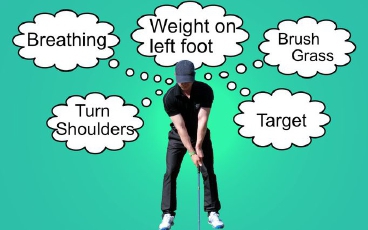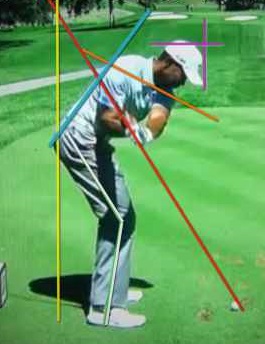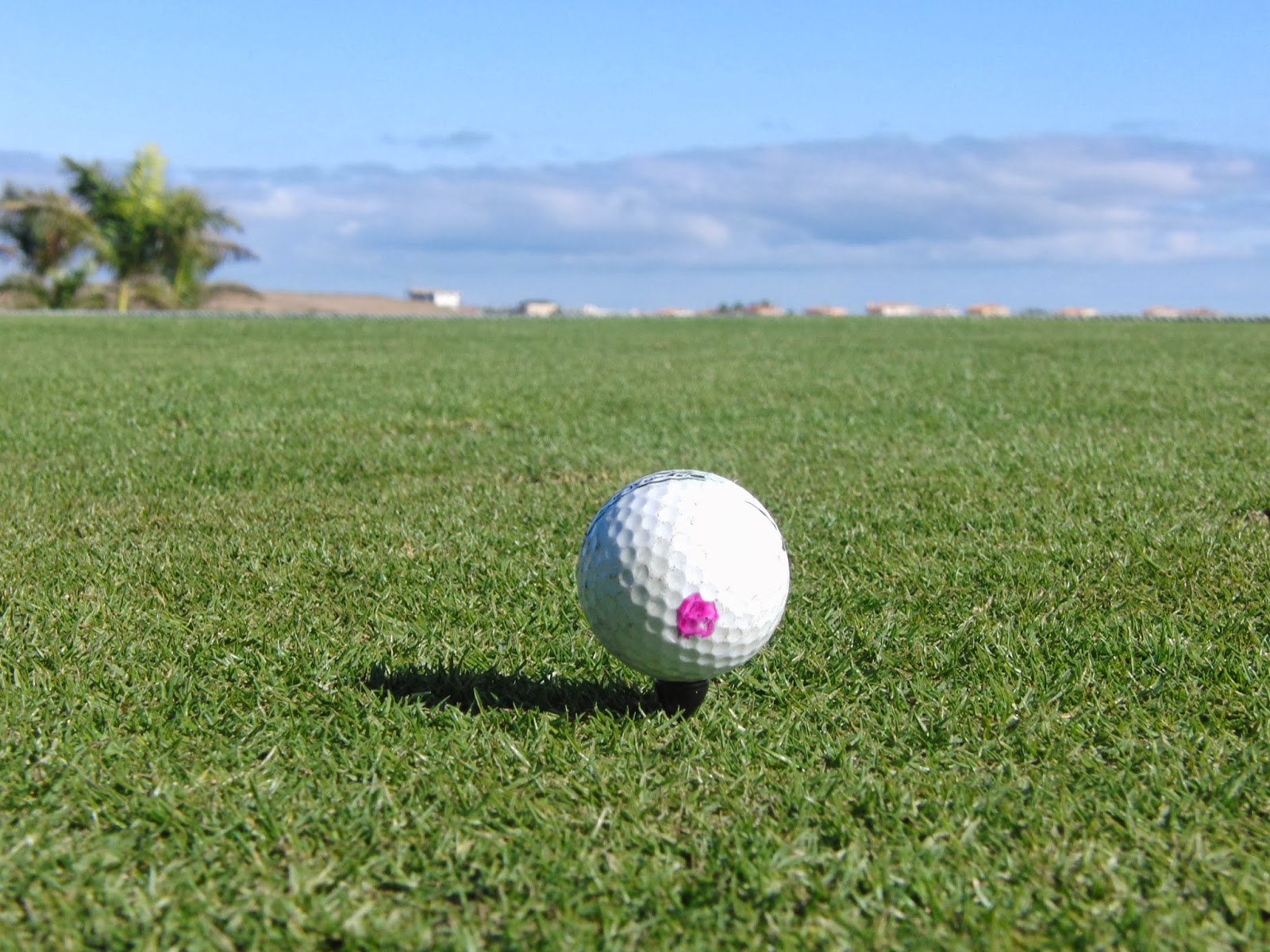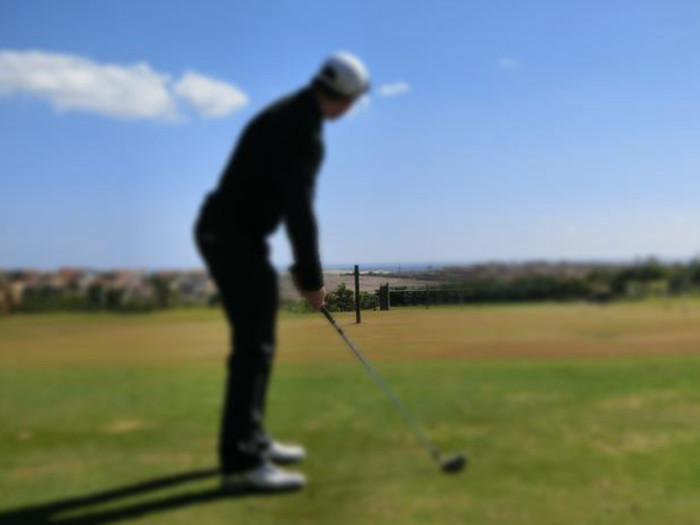Discover Which Focus Is Right For You
Mental Game
Most golfers work constantly on their swing techniques. Despite your efforts the progress at a certain point slows down or even stops. There are simply too many variables and one of the most important is where you place your attention.
Most golfers work constantly on their swing techniques. They search for the perfect mechanics in the hope that, one day, things will fall into place and they will never miss a fairway again. Despite your efforts the progress at a certain point slows down or even stops. There are simply too many variables at play creating optimal performance — and one of the most overlooked areas is where you place your attention.
Example
To understand this, I will use a relatable example. Imagine you are playing a round of golf, and you are going along pretty well. You are not really thinking of much, and the majority of shots are pretty decent. Then, out of the blue, you hit a stinker.
“You bent your left arm,” shouts your playing partner.
He’s a slightly lower-handicapper than you, so his expertise is obviously warranted (sarcasm). For the next few shots, you become highly aware of your left arm, and your game goes completely down the pan. What happened exactly? Your focus of attention changed.
Focus
While there are many subcategories of these, I will discuss five different types of attention that we could have. Each type of attention has been studied (motor learning science), and has been shown to have variable effects on both learning and performance.
Internal: An internal focus is typically characterised by being aware of one’s body movement. It is the conscious control of limbs or individual body parts:
- Keep my left arm straight
- Move my hips this way
- Shift weight
- Hinge my wrists this way
While the vast majority of studies show that these types of focus tend to decrease coordination, performance (and slow down learning), they can be of value when we desire a more direct technical change. But for the focus to be beneficial, we need to understand the underlying mechanics of the body-movement and the reason (destination) of the movement the player is working on. At the right times, these can help to further our techniques — even if it is at the cost of our ability to coordinate movement fluidly.
External Process: The next type of focus is one that is when the attention is directed more externally from the body of the player. It deals with the process of creating a good shot, or a task focus. More what to do than how to do it.
- Making a divot in the right place
- Striking the center of the club face
- Contact/brush the grass as close to the ball as possible
Studies have shown this to be very beneficial in terms of speed of learning and retention of learning. It can dramatically improve shot performance, when it is used to coordinate the movement of the player to a singular goal. For example, if a player is suffering from poor distance control, an increased awareness/focus of ground strike quality can create dramatic improvements in results.
These focuses tend to be better for handicap golfers and, in my experience, it is also a quicker way to get a multitude of performance and learning benefits in a short time.
External result: This focus is, once more, outside of the body and it involves a heightened awareness of the target and/or ball flight. However, it differs from the previous focus in that it deals predominantly with the result.
- Focusing on the target

- Focusing on the shape of the shot
- Focusing on the ball flight
- Focusing on the landing spot
Again, the science shows that these seem to improve our coordination — as if our brains jostle all the moving body parts toward one collective goal. In fact, the research shows that external-result foci can coordinate the body parts in many subtly different ways to achieve the same goal.
However, this effect is normally only seen in tasks which are simple, or tasks which have already been learned. So, for better or elite golfers, focusing on the target may improve performance. However, for a lesser golfer who hasn’t yet ingrained vital impact skills (such as a centered-face strike), it may cause poorer performance.
Neutral: Neutral focuses are thought processes which are irrelevant to or not directly related to the performance:
- Counting
- Singing in your head
- Humming
- “what shall I have for food tonight”
These act as a conscious distraction, putting your focus on the neutral thought and allowing the actions to arise automatically. Science has shown that these types of focus can be beneficial for players who have good learned skills, yet seem to be unable to bring them out.
Also, there is an increased pressure resistance with a neutral thought. Thoughts about that bad shot last time, about your nervosity or about other players seem to disappear when your focus in on a neutral topic.Under pressure a neutral focus may be the key to bringing out your best game. Now, this type of focus may not make you play better than you are capable of doing, but it may help you become more pressure resistant and attentionally blind to distractions. Another benefit I noticed is the player experience a more fluid, free and natural swing movement, as they are free of fear and just going on automatic responses, which leads to incredible a consistency of shots.
For higher handicap players, this type of focus may be detrimental, as they may need to have a higher level of focus on their swing due to it being more of an unlearned skill. However, I have seen neutral focus be beneficial even for complete beginners.
Transcendental: This is what most label “The Zone” and it is characterised by a distinct lack of self-awareness, or even awareness of the situation.
We have all experienced this flow state in one way or another. Although probably in different sport than golf, where we have time to control the entire process, but you might recall "the zone" playing faster-paced, rhythmical activities (such as tennis). Although in golf it is not impossible. Many of the best players report playing their best and unable to recall being “there” during the performance. This state is cha racterized by a distinct lack of consciousness, yet achieving high performance.
This state of mind is also quite paradoxical, in that the more you try to get into it, the less likely you are to find it. However, I have personally found (with myself and my pupils) that they are better able to get into this high-performing, low-thinking state via training with neutral focuses, using rhytms (counting etc.) or repetitiveness (consistent routines). When we are able to trust our ability to perform without conscious control, we seem to be able to “let-go” much easier.
Summary
This was a brief look at how where we place our attention can have an effect on our performance, learning and transference of learning (from the range/non-pressured situations to competitions). It is also a look at how players at different levels and with different issues may benefit from a change of mindset.
I use my knowledge of the science, as well as my experience in teaching more than 10,000 hours of lessons, in order to guide players to better focuses for them so they can achieve their best performances, or speed up change (depending on the goal). My online practice programs also go through a testing procedure to hone in on the right focus for the player (CLICK HERE to learn more).
I also discuss these topics and much more in The Practice Manual: The Ultimate Guide for Golfers. The book has been a No. 1 best-seller on Amazon in the U.S., UK, Canada, France and Germany.

